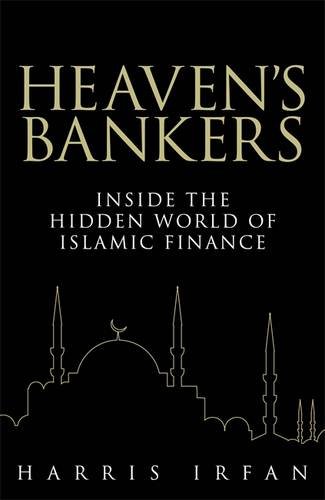
The Islamic finance industry has grown significantly over the past 15 years, and for much of that period Harris Irfan was at the core of its expansion and product innovation. As a co-founder of the Islamic finance team at Deutsche Bank, he was an early leader in the field. His book, Heaven’s Bankers: Inside the Hidden World of Islamic Finance, (Constable, 366 pp) gives a fine account of some the groundbreaking transactions that opened up the industry and made it more competitive with conventional banking.
Irfan provides detailed commentary on some of the critical investment banking developments that pushed Islamic finance closer to mainstream finance. These include Islamic derivatives and hedging techniques, sukuk issuance and such innovative deals as the proposed Safa Tower real estate development in Saudi Arabia, the Dubai government’s 2006 acquisition of British shipping and logistics company P&O—which incorporated a highly original shariah-compliant pre-IPO zero coupon exchangeable bond—and private equity transactions such as Abraaj Capital’s acquisition of Egyptian Fertilizers Company in 2007, which was, at the time, the Islamic finance sector’s biggest buyout.

The book describes the history of Islamic finance and the importance of the values underlying shariah compliance—namely justness, transparency and social awareness. It also tells the story of how the market has developed, and how those values are not always adhered to. Competitiveness, which was at the heart of Deutsche’s early work, led to opportunism, says Irfan. Islamic banks began to mimic the practices, operations and products of their conventional peers. Irfan describes the codifying of shariah. He writes of Abu Hanifa, the founding father of Islamic jurisprudence, who in the 8th century developed a framework for commercial and social interactions based on the life and actions of the Prophet. A systematic development of shariah would provide the foundation of Islamic economics.
Irfan points out that, to many bankers, Islamic finance has become merely the provision of modern sophisticated instruments, whether interest bearing or not, within an alternative legal system. The key, for these bankers, is to find the appropriate legal devices to circumvent the restrictions under which Islamic finance operates, he says. A common complaint of many market observers is that much of Islamic finance simply mimics conventional banking and adds little in the way of ethical or moral guidance, Irfan notes.
In this reviewer’s opinion, Irfan unrealistically questions fractional-reserve banking, the core of the current global financial system, the absence of which would have a large negative impact. In any case, Basel III developments, which focus on stable funds and impose leverage metrics, have reined in capacity.
The book describes many of the dilemmas of Islamic banking, including Islamic jurisprudence (which is more subjective, leading to different legal interpretations) and differences of opinion among scholars, the assignment of a ruling by an analogy to a previous decision, and the accepted customs of a community.
Irfan provides perhaps too much homage to Tarek El Diwany, a well-known commentator on Islamic finance, in the book. Nonetheless, he addresses the need for adherence to the spirit as well as the letter of shariah. Some commentary is also given on Islamic finance houses that ran into severe problems in the global financial crisis.
Irfan appears to grapple with ethical issues arising from both his own work and that of Islamic finance at large. He notes that as the industry grows, it increasingly compromises its principles. Many Islamic financiers now approach the discipline from a practical rather than an ideological standpoint, with the use of legal devices, special purpose vehicles, etc.
Heaven’s Bankers provides a good introduction to the possible benefits of—and the existing challenges faced by—Islamic financing, and elucidates some of the more interesting stories behind its development.



